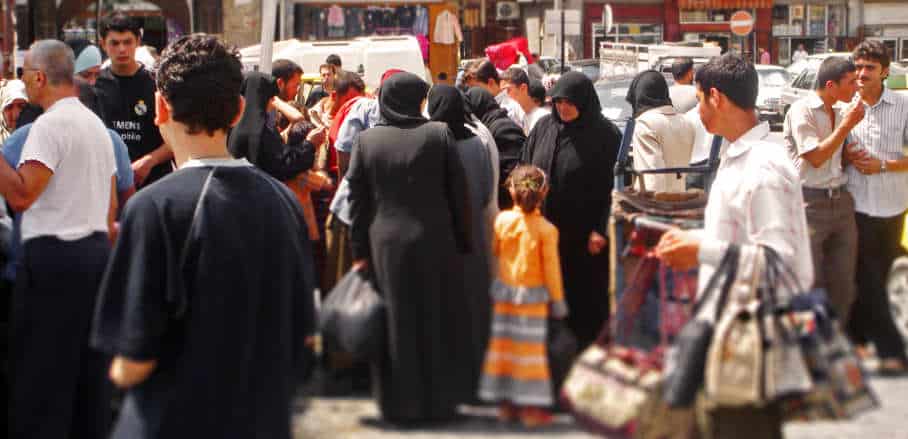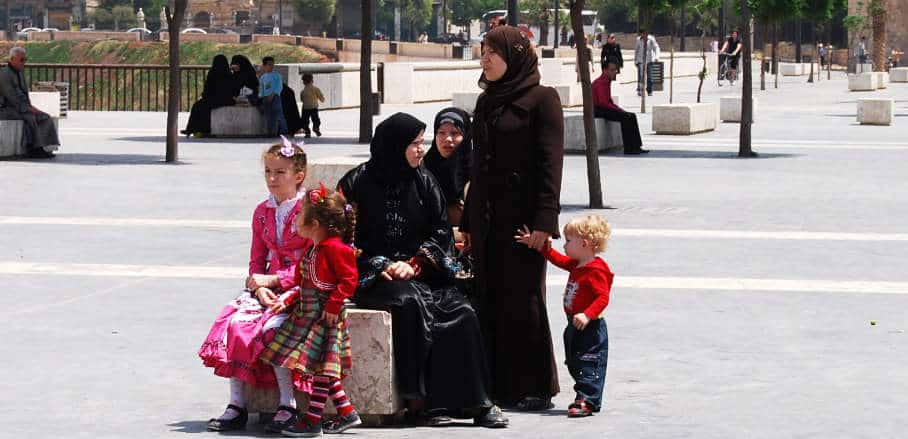Healing the Wounds: How Public Spaces Foster Peace and Rebuild Communities in War-torn Aleppo
During the war, public spaces can be drivers for resilience. Ghada Rifai explores the transformative potential of public spaces in post-conflict cities through the example of Aleppo in Syria.
As cities worldwide grapple with the aftermath of conflict, the role of public spaces in fostering peace and social cohesion becomes ever more critical. Aleppo, a city deeply affected by war, shows how these spaces can play a pivotal role in healing and rebuilding a community.
“I used to participate in providing first aid and supporting affected individuals when shells fell in public places.” – Aleppo resident
“In those spaces, unity and compassion among neighbours and family members contribute to enhancing safety and positivity.” – Aleppo resident
Public Spaces in Aleppo Pre-War: Social Cohesion vs. Social Exclusion
Before the war, in some cases, the public urban spaces in Aleppo were vibrant hubs that brought together individuals from diverse cultural backgrounds. These spaces served as meeting points, providing a sense of inner peace and psychological comfort. Events held in these spaces played a crucial role in integrating diverse communities and surpassing the segregation seen in residential areas.
However, public spaces also faced challenges that potentially created hidden barriers between communities. Some spaces lacked comfort and freedom for open conversations, leading to conflicts and violence arising from differences between individuals. Certain public spaces were exclusive to specific groups or even used as conflict tools. Disparities in service distribution between the east and west of Aleppo.
Moreover, disparities in service distribution as well as uneven urban planning and development between the east and west sides of Aleppo led to feelings of neglect and contributed to social segregation and inequalities among residents. The neglect of certain areas fueled feelings of resentment and injustice, contributing to heightened violence in later years.
Hence, on the one hand, squares containing a historical value in the city brought together individuals from diverse backgrounds within community activities and provided suitable services for all groups. On the other hand, discrimination in service distribution between the east and west sides of Aleppo, poor infrastructure implementation, and neglect of local neighbourhood spaces created barriers within neighbourhoods and hindered community connections.
Public Spaces in Aleppo During the War: A Crucial Need Amidst Violence
During the war, public urban spaces emerged as a pressing need amidst direct violence in Aleppo. The disappearance of traditional public spaces forced people to seek alternative sanctuaries that fostered unity and support among neighbours and family members. These makeshift public spaces, such as “express” kiosks, served as havens where individuals found solace, shared their worries, and offered guidance and support to one another. These spaces became means of escaping the harsh realities of war, providing moments of peace and tranquillity.
However, these spaces faced challenges during the war that again contributed to the creation of hidden barriers between communities. The danger posed by military activities made open spaces unsafe, while incidents of theft and kidnapping reinforced divisions, leading to mutual accusations among residents. The absence of public services and protection in these spaces further exacerbated the situation, resulting in uncivilised behaviour that tarnished the image of public spaces among families. Additionally, armed individuals misusing public spaces intensified the challenges faced by these areas.
Despite the obstacles, participants from different parts of Aleppo shared positive experiences of public spaces during the war. In Western Aleppo, interactions in public spaces fostered positive energy and promoted understanding between diverse individuals, breaking down stereotypes and barriers. Additionally, certain places that were once restricted became open to all, promoting greater interaction and coexistence.
Aleppo Post-War: Strengthening Unity through Public Spaces
In Aleppo, public urban spaces fulfilled an ambivalent role during the war – serving as vital sanctuaries and meeting points for communities while facing challenges that hindered their full potential in peacebuilding. However, by taking small steps and working with locals at the grassroots level, we can ensure that these spaces also play a crucial role in healing and reconciliation. The process of rehabilitating public spaces opens new platforms for dialogue between Aleppians, allowing them to rediscover their communities’ needs and priorities.

Public spaces strengthen unity in post-war Aleppo. ©alejoooo/flickr
Engaging with the local population ensures that public spaces truly reflect the aspirations and desires of those who will use them. By actively involving residents in designing and activating public spaces, we can ensure that they become meaningful and inclusive environments that foster unity and promote social cohesion.
As we embark on this journey of revitalising public spaces, it is essential to consider the different roles and functions that each public space can serve. Public spaces across the city should be interconnected, creating a network of meeting points that facilitate interactions and understanding between diverse communities. This interconnectedness will bridge the gaps that arose during the war, fostering a sense of solidarity and shared identity among Aleppians.
